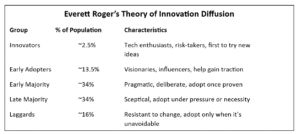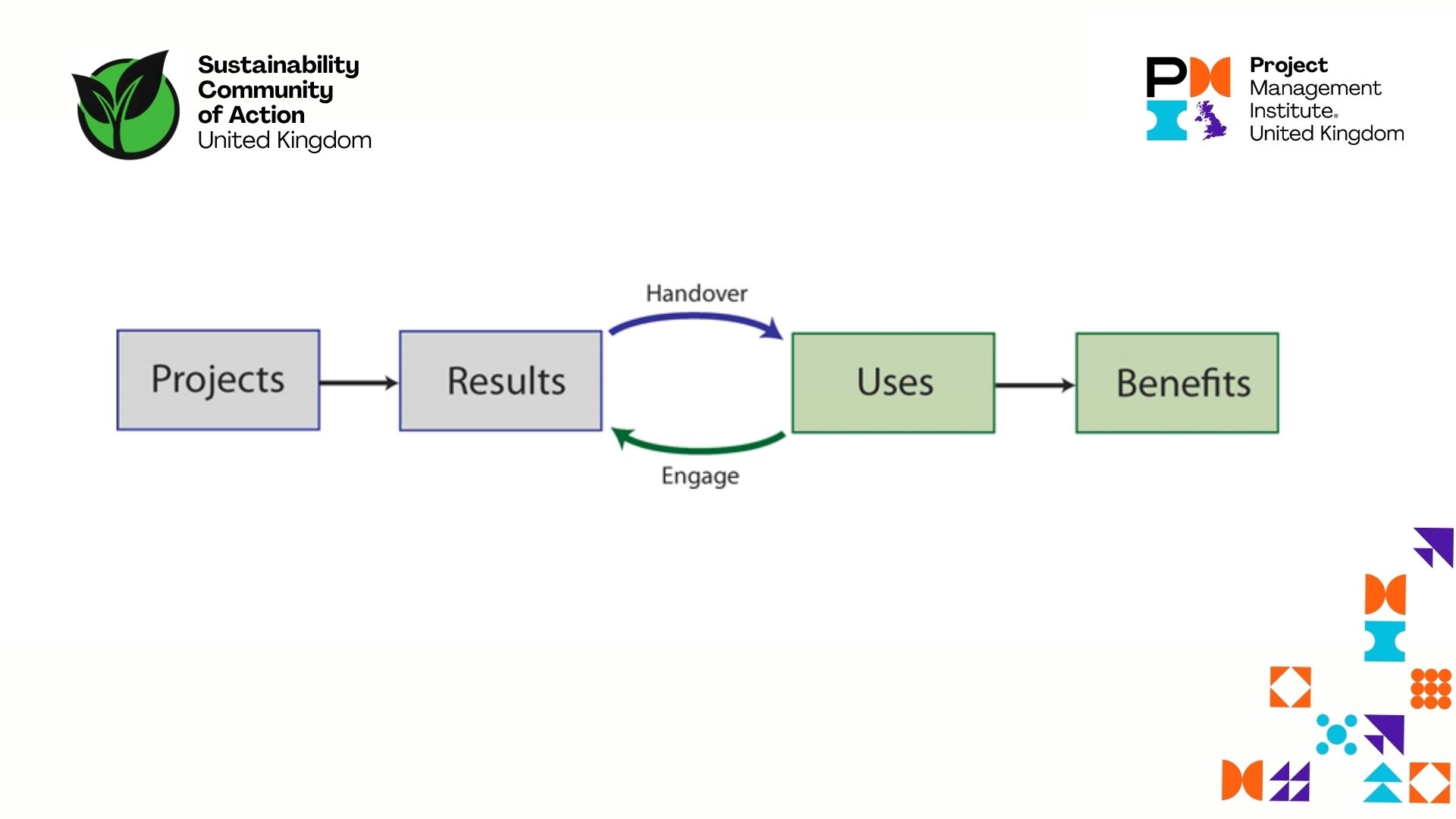How can project managers have the biggest impact on sustainability?
PRUB-Logic (see below) conclusively demonstrates that project managers cannot deliver or ensure or realise sustainability but they can enable sustainable actions and, occasionally, have some influence over whether or not a small subset of our populations (‘early adopters’) will take sustainable actions.
Earth is facing several polycrises including climate change, biodiversity loss, plastic pollution, unsustainability and ecosystem overshoot. In most cases, widespread changes in behaviour by our populations are the most effective ways to address these crises. But it is just not happening at a sufficient scale to make an impact. Why? And how can project managers influence widespread action?
PRUB-Logic states:
Projects create Results that enable Uses to create Benefits that motivate Uses

Only Uses create Benefits. Projects do not create or deliver or ensure or realise Benefits (outcomes).
Consider the situation where a purchaser like a government agency contracts a project manager to build a cycleway that will be used by the public. Neither the purchasers nor the project manager can control the Uses (people cycling on the cycleway). Only the users control the Uses to create Benefits.
So project managers and purchasers cannot deliver or realise or ensure Uses and Benefits or outcomes and impacts.
The best that project managers can do is to run Projects that deliver or ensure or realise Results that enable Uses to create sufficiently motivating Benefits.
What is meant by ‘sufficiently motivating Benefits’? All sorts of Benefits can arise from Uses but unless the users themselves personally receive enough Benefits, they will decide that the Uses are ‘just not worth it’ – so the Uses will not happen – so the Benefits will not be created.
So even if project managers create perfectly enabling Results, if the users do not gain sufficient ‘Worth’ from the Benefits that they create from the Uses then the Uses simply will not happen and no Benefits will arise.
Are all users the same? Not according to Everett Roger’s Theory of Innovation Diffusion. The following table shows Roger’s analysis of key demographic groups and their characteristics.

What does this mean for sustainability and other polycrises?
Current observations are that many innovators and some early adopters are already taking action on the polycrises. However, other demographics are not going to take action until they are convinced that either they will create worthwhile Benefits for themselves or they are forced to take action.
So who should project managers target if they want a larger percentage of our populations to take action on the polycrises?
It seems that the target demographic is ‘early adopters’, so it is important to determine the Benefits, and the Worth of those Benefits, that will trigger behaviour change by these early adopters. More research is required on this topic but it seems that some early adopters are motivated by the Worth of Global Benefits, that is Benefits to society and the environment at large. More early adopters and perhaps some ‘early majority’ could potentially be motivated by the Worth of Motivational Benefits, that is the Worth of the Benefits that they can create for themselves by undertaking the Uses that project managers have enabled.
While the above arguments have been aimed at polycrisis initiatives, most of them also apply to all Projects which are creating Results to be Used by our communities and wider populations.
So it is worth re-emphasising that Only Uses create Benefits. So project managers and purchasers cannot ensure or deliver or realise Uses or Benefits (or outcomes or impacts or Worths). However, they can enable Uses and possibly may be able to influence Uses if they really understand users’ desired Uses, Benefits and Worths, especially for ‘early adopters’.
By Dr Phil Driver
LinkedIn
Books


